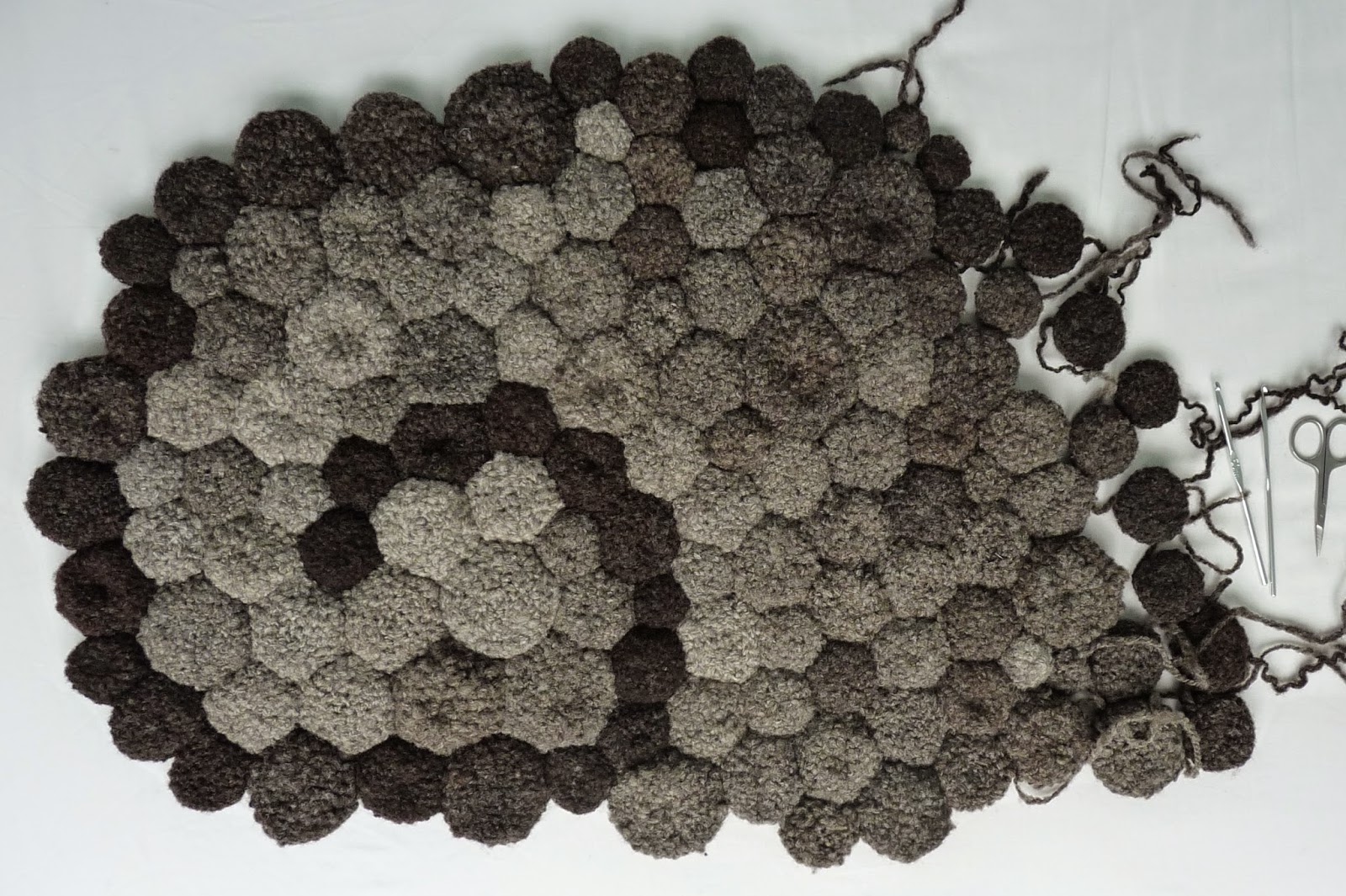 I have been following the Wovember campaign - if you haven't seen it, do have a look, interesting articles have been posted through the month. Of course I wanted to join in with a wool along (WAL), so on the first of the month, I went rooting through my stash of fleeces, wondering how I ever bought so many and consoling myself that my home will be wonderfully well insulated this winter and I can go to bed knowing that hidden underneath me, several rare breed flocks are being supported.
I have been following the Wovember campaign - if you haven't seen it, do have a look, interesting articles have been posted through the month. Of course I wanted to join in with a wool along (WAL), so on the first of the month, I went rooting through my stash of fleeces, wondering how I ever bought so many and consoling myself that my home will be wonderfully well insulated this winter and I can go to bed knowing that hidden underneath me, several rare breed flocks are being supported.The first fleece I bought in 2014 was an ordinary Blue Texel. Back in May, I posted about washing and skirting it and using the rougher fibres to hook a rug. I have been tripping over three bags full of unfinished project ever since. The bulk of the fleece had been sorted by colour, about a third of the wool had been spun, two skeins much thinner than intended, through talking too much on spinning camp in June. The final bag contained a start on knitting.
I'm very fond of rustic knitwear. Anyone going out in one of my jumpers walks in peril of being rounded up by a sheep dog. This bouncy fleece would be cosy, but on further consideration, spun into a bulky, woollen yarn and knitted into a thick jacket, it was all too easy to imagine the wearer disconcerted by an unexpected check for blowfly.
There are limits to my willingness to tempt fortune, but none to my love of dappled fleece colours. Blue Texel is full bodied with a disorganised crimp, which I think makes it a Down-type breed. The staple length varied from 3-7cm, though much longer once put on the hand carder, because the fibres are so elastic. No point fussing about neps in the rolag or twist in the singles, I decided the yarn's greatest quality was its natural grey/brown gradient and resolved to relax and take pleasure in quick, simple
carding and headlong spinning as I pleased. A thick rug would make the most of the warmth and display all the shades. Double crochet creates a firm, tough fabric. Making a patchwork of little cushions should be comfortable underfoot and also meant there would be no need to strive for uniformity when spinning or to stress over the stitch count to crochet constant dimensions.
Each cushion started with a loop and two chain on a crochet hook between 4 and 5.5mm, depending on how chunky the skein of yarn. Six double crochet (US single crochet) stitches were made into the first stitch, bringing the yarn tail in to the centre. Continuing in the same direction, spiralling outwards with no special link at the end of the rounds, the
second round was two double crochet into each of the six stitches. Third round, one double crochet in first stitch, two in the next, one double crochet in the next two stitches, then two in the following stitch and repeat, then one double crochet followed by two double crochet in the twelfth stitch to complete. From the fourth round on, it all got a bit ad hoc,
 typically increasing in every fourth, then every sixth stitch with successive rounds, stopping when happy with the diameter. Filling the cavity loosely with a length of yarn, I reversed the pattern as best I could recall, decreasing instead of increasing till six stitches remained, breaking the yarn and threading it on a needle to sew the centre closed and bring the tail out through one side. Minimal stitch definition means no worries if you stray from the pattern, long as it looks about right.
typically increasing in every fourth, then every sixth stitch with successive rounds, stopping when happy with the diameter. Filling the cavity loosely with a length of yarn, I reversed the pattern as best I could recall, decreasing instead of increasing till six stitches remained, breaking the yarn and threading it on a needle to sew the centre closed and bring the tail out through one side. Minimal stitch definition means no worries if you stray from the pattern, long as it looks about right.By 15th November, I was more than half way through spinning the fleece, having unravelled the knitting and crocheted it up. It was a surprise to find each skein of 24 rolags only made between six to ten cushions. A fair sized hearth rug was not on the cards, although the original fleece had covered most of a floor in a modest sized room. I had planned a sort of pixellated image of an oak tree in autumn, but it looked unconvincing.
The Fibonacci spiral is a shape repeated over and over by plants and shells and even galaxies. This article says it has to do with the Golden Ratio of 1.6, though my maths isn't up to a proper comprehension of the numbers on Wikipedia. Copying it, approximately of course, this is how far I got by the WAL photo sumission date of 25 November.
Writing a sentence to send to Wovember about my experience of the project so far, my first thought was that it had taken far longer than expected to produce a much smaller mat. Right behind that idea came a terrible tendency to wax lyrical and as usual, I sploshed right in, getting out a book of Gerald Manley Hopkins poetry, which I find should have been returned to the school library in 1980. Ah well, only two people had taken it out since 1975 and through the marvels of the interweb, now anyone can have a read of Pied Beauty. I name this rug Dappled Thing and rejoice in its landscape, plotted and pieced.
From the sublime to the fastidious. Here it is in action.
One fleece transformed into two matching bathroom mats. Harmonious cushions, if not quite the music of the spheres.










What a great idea i like the look of the finished rug ,i also like the fact that if you continue you can end up with any size and shape of rug you like. Well done.
ReplyDeleteThanks very much. It has occurred to me that I do have some other rug worthy fleeces stashed away and if I put the time in, I could add on to this one until it is big enough to be a hearth rug. Presently, I'm on count down to Christmas knitting.
DeleteBeautiful rugs. Well done. I love the spiral and the colour change. I am a beginner and just spinning my first fleece.
ReplyDeleteWelcome to an absorbing world - what kind of fleece do you have?
DeleteThis comment has been removed by the author.
Delete